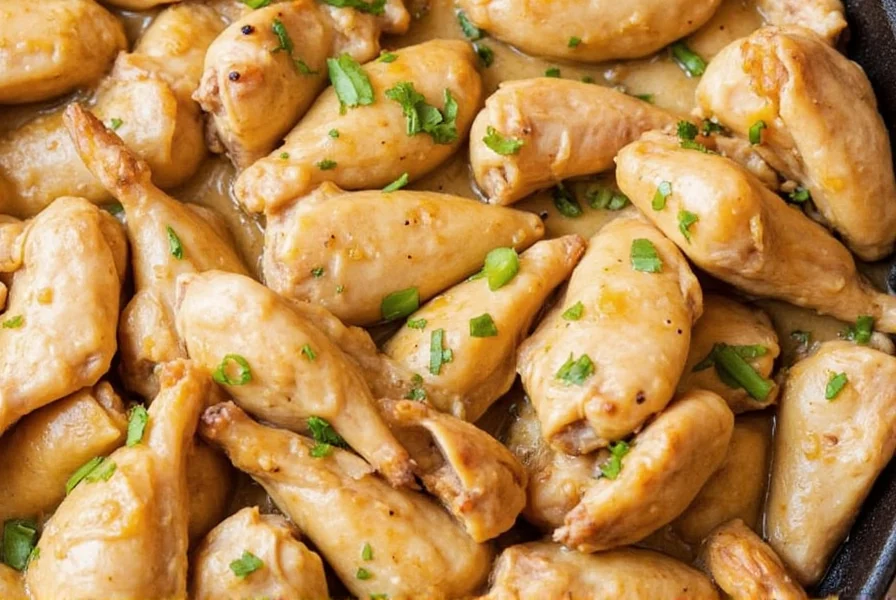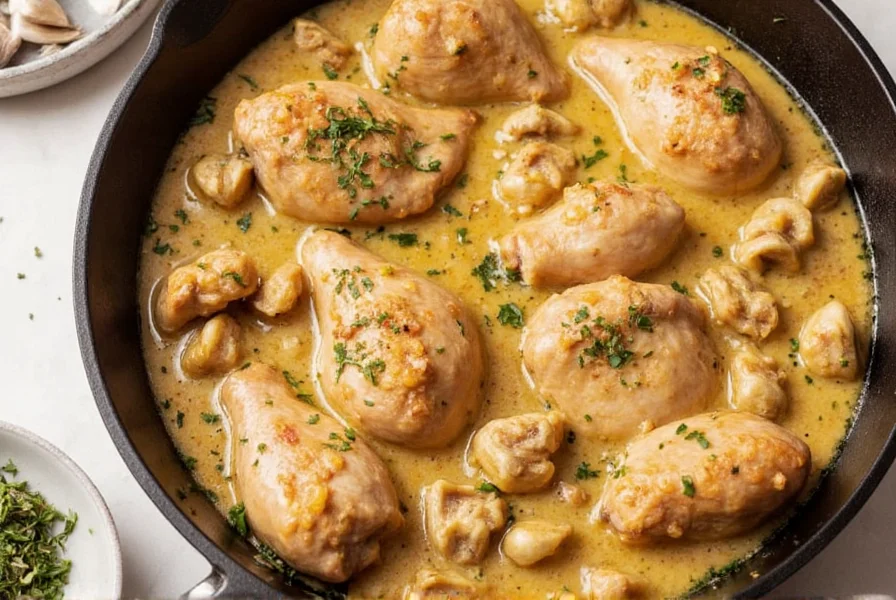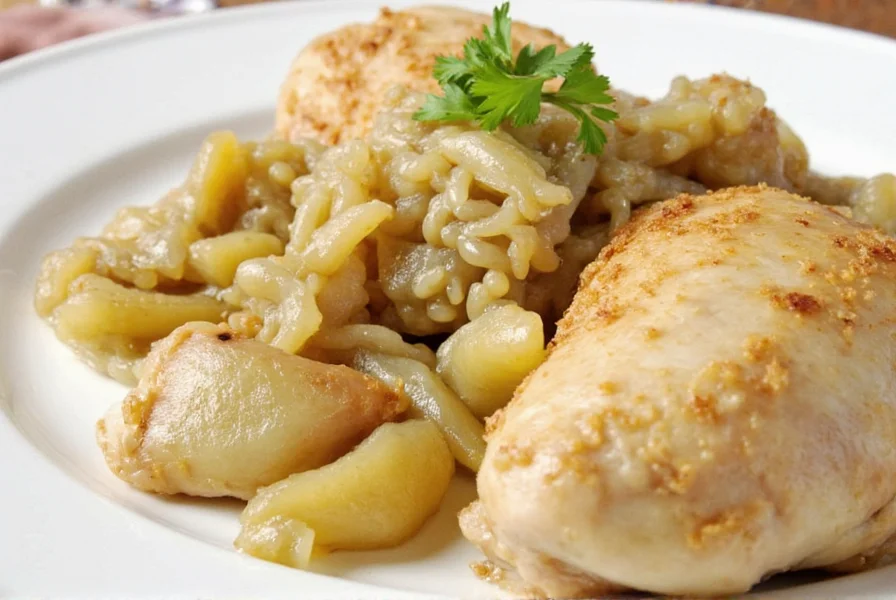At first glance, the name chicken with forty cloves of garlic sounds like culinary madness. How could any dish possibly use forty whole garlic cloves and still be edible? The secret lies in the cooking technique—this iconic Provençal recipe transforms pungent garlic into sweet, caramelized delicacy through slow roasting. Forget everything you think you know about garlic overload; this dish represents French country cooking at its most elegant and surprising.
The Origins of This Unlikely Classic
Originating in the south of France, poulet aux quarante gousses d'ail dates back to peasant cooking traditions where resourceful home cooks created flavorful meals from simple ingredients. The number forty isn't arbitrary—it represents abundance in French culinary tradition, similar to "forty days and forty nights." Authentic versions use exactly forty cloves not for intensity, but to create a luxurious garlic-infused sauce that coats the chicken.
Why Forty Cloves Actually Works
The magic happens through proper technique. When roasted slowly at moderate temperatures:
- Raw garlic's harsh allicin compounds break down
- Natural sugars caramelize without burning
- Cloves become soft enough to spread like butter
- Acidity from wine balances the sweetness
This transformation explains why chicken with forty cloves of garlic recipe doesn't taste overwhelmingly garlicky. The slow cooking process creates complex flavors where garlic plays a supporting role rather than dominating the dish.
Essential Ingredients for Authentic Flavor
While variations exist, the traditional preparation requires minimal ingredients:
| Ingredient | Traditional Amount | Key Purpose |
|---|---|---|
| Chicken pieces | 4-6 portions | Base protein that absorbs garlic essence |
| Garlic cloves | 40 whole, unpeeled | Creates sweet, mellow sauce base |
| Dry white wine | 1 cup | Acidity to balance richness |
| Chicken stock | 1 cup | Moisture for slow cooking |
| Fresh thyme | 3-4 sprigs | Earthy herbal note |

Step-by-Step Cooking Process
Follow these critical steps for perfect chicken with forty cloves of garlic:
- Brown chicken in olive oil until golden (skin-side down first)
- Add unpeeled garlic cloves to the pan around the chicken
- Pour in wine and stock to partially submerge ingredients
- Add herbs and bring to gentle simmer
- Cover and roast at 375°F (190°C) for 45-55 minutes
- Remove garlic skins after cooking (they'll slip right off)
- Reduce sauce until slightly thickened
The unpeeled garlic is crucial—the skins protect cloves from burning while allowing flavors to develop. Peeling before cooking would cause disintegration and bitterness.
Common Mistakes to Avoid
Even experienced cooks make these errors with the chicken with forty cloves of garlic recipe:
- Peeling garlic before cooking - leads to disintegration and bitter flavors
- Using high heat - burns garlic instead of caramelizing it
- Substituting minced garlic - changes texture and flavor profile completely
- Overcrowding the pan - prevents proper browning and sauce reduction
Why This Dish Defies Garlic Expectations
Food science explains the transformation: raw garlic contains allicin, which creates that sharp, pungent flavor. When roasted slowly:
- Allicin breaks down into milder sulfur compounds
- Maillard reaction creates complex caramelized flavors
- Enzymes convert starches to simple sugars
- Moisture evaporates, concentrating sweetness
This chemical transformation is why properly prepared chicken with forty cloves of garlic tastes rich and nuanced rather than aggressively garlicky. The garlic essentially becomes a vegetable component rather than a seasoning.
Serving Suggestions and Variations
Traditionally served with:
- Crusty French bread for soaking up the garlic-infused sauce
- Steamed green beans or ratatouille
- Simple green salad with vinaigrette
Creative variations include:
- Adding lemon zest for brightness
- Substituting chicken thighs for more flavor
- Using rosemary instead of thyme for earthier notes
- Adding olives for Provençal authenticity

Storage and Reheating Tips
This dish often tastes better the next day as flavors continue to meld. Store in an airtight container for up to 3 days:
- Reheat gently on stove with splash of stock or water
- Microwave at 50% power to prevent rubbery chicken
- Never boil when reheating—maintain gentle simmer
The garlic cloves actually improve with storage, becoming even more tender and flavorful. Many chefs consider day-old chicken with forty cloves of garlic superior to freshly made.
Frequently Asked Questions
Does chicken with forty cloves of garlic actually taste strongly of garlic?
No, despite the large quantity, properly prepared chicken with forty cloves of garlic has a surprisingly mild, sweet garlic flavor. The slow roasting process transforms the harsh raw garlic into soft, caramelized cloves with a mellow, buttery taste that complements rather than overwhelms the chicken.
Can I reduce the number of garlic cloves in this recipe?
While possible, reducing the garlic significantly changes the dish's character. The forty cloves create a specific sauce consistency and flavor balance. If concerned about intensity, try 30 cloves initially, but understand that the authentic experience comes from the full amount—remember, they're roasted whole and become very mild.
Why do you leave the garlic unpeeled during cooking?
Leaving garlic unpeeled protects the cloves from burning while allowing flavors to develop. The skins prevent the garlic from disintegrating into the sauce while still permitting flavor transfer. After cooking, the skins slip off easily, leaving perfectly tender cloves. Peeling before cooking would cause the garlic to break down too much and potentially become bitter.
What wine works best for chicken with forty cloves of garlic?
A dry white wine like Sauvignon Blanc or unoaked Chardonnay works best. The acidity balances the richness of the garlic and chicken. Avoid sweet wines as they'll clash with the savory elements. For non-alcoholic versions, substitute with additional chicken stock plus 1 tablespoon of white wine vinegar to maintain necessary acidity.
Can I make this dish in advance for entertaining?
Yes, this dish is excellent for make-ahead entertaining. Prepare it one day in advance, refrigerate, then gently reheat before serving. Many chefs believe the flavors improve with 24 hours of resting time. When reheating, add a splash of stock or water to maintain sauce consistency, and warm gently over low heat without boiling.











 浙公网安备
33010002000092号
浙公网安备
33010002000092号 浙B2-20120091-4
浙B2-20120091-4